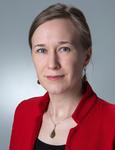| Spatial | Stride length | Distance traveled by the same foot by two consecutive heel contacts. | [12, 23, 26, 31, 42, 47, 92, 95, 112] |
| Step length | Traveled distance from one heel footprint to the heel of the opposite footprint. | [14, 23, 26, 27, 63, 74, 92] |
| Step width | Distance between the line of progression of the left heel footprint and the line of progression of the right heel footprint. | [50] |
| Distance | The cumulative traveled distance. | [47, 57, 67] |
| Temporal | Stance/swing time | Duration of the stance/swing phase. | [7, 74, 114, 125] |
| Stride time interval | The time interval starts when one foot makes contact with the ground and ends when that same foot contacts the ground again. It displays fractal dynamics and reflects the rhythm of the locomotion. | [7, 12, 27, 47, 53, 63, 112, 114] |
| Stride time variability | This is related to the control of the rhythmic stepping mechanism and calculated by the mean and standard deviation of stride time. | [47] |
| Step time | The time between two consecutive heel strikes. | [14, 23, 31, 63, 71, 74, 92, 93, 114] |
| Step rate | The rate of steps per minute, also called cadence. | [12, 23, 26, 31, 50, 63, 93, 95] |
| Single support time | ‘Single support’ happens when only one foot is in contact with the ground. Single support time is the duration of single support. | [50, 93, 95] |
| Double support time | ‘Double support’ happens when both feet are in contact with the ground. Double support time is the duration of double support. | [26, 27, 79, 93, 94, 95, 112] |
| Spatiotemporal | Stride velocity | The stride length divided by the stride time. | [27, 41, 63, 71, 92, 126] |
| Stride/step frequency | Number of foot contacts per second. | [12, 41, 42] |
| Stride/step symmetry | Duration amplitude similarity of the shape of acceleration curves comparing right and left strides/steps. | [12, 23, 42, 71, 122] |
| Step time asymmetry | Defined as the difference between the mean step time of each leg and the combined mean step time of both legs. | [23] |
| Stride/step regularity | A measure of stride/step to stride/step consistency. | [12, 23, 42, 53, 71, 122] |
| Gait speed | The distance walked divided by the ambulation time. | [12, 23, 27, 31, 42, 47, 53, 74, 92, 95, 112, 114, 128] [12, 12, 23, 27, 31, 47, 53, 74, 92, 95, 112, 114, 128] |











